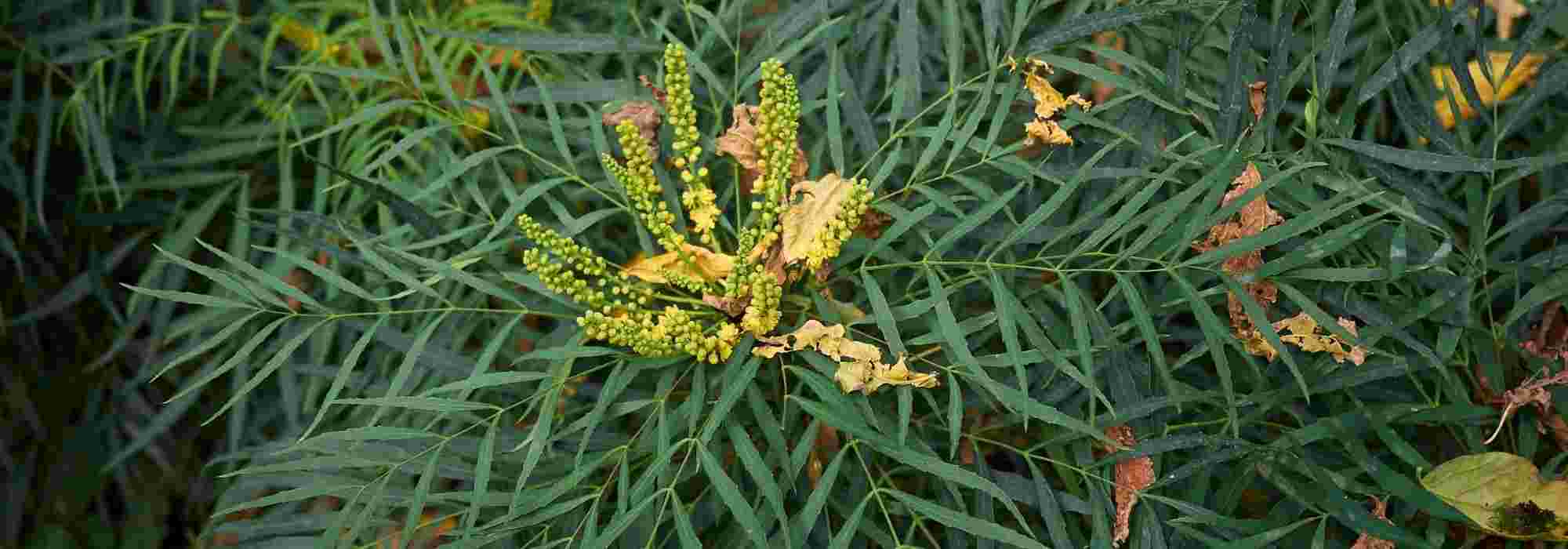
Beautiful shrubs all year round: it's possible!
Seasonal appeal
Contents
An enchanting flowering, breathtaking foliage, fabulous bark or mind‑blowing fruiting… That’s why we garden! For all those magical moments. But alas, sometimes — often even — those moments are disconcertingly ephemeral. It is up to us to seize that fugacious moment to savour it fully, but it’s always a little sad when a plant is beautiful only for a limited time. Fortunately, some shrubs can extend an interesting period to… the entire season. Discover our selection of bushes that remain beautiful throughout the year.
Decorative-wood Cornus: not just beautiful colourful bark!
Decorative wood dogwoods are often planted to brighten winter thanks to the vivid colour of their stems: red, yellow, green or orange. But it is easy to forget that they are attractive for the rest of the year thanks to foliage that is often very colourful as well, notably in autumn and sometimes even in spring, and some varieties are even variegated. The flowers, although less striking purely from an aesthetic point of view, are very nectariferous and attract a whole procession of insects in late spring. The berries are often very colourful too (white, bluish…) and provide a feast for birds in autumn. In short, decorative wood dogwoods should be planted in every garden.
They thrive in full sun or partial shade and tolerate moist or drier soils, even calcareous. These bushes are perfect in an informal hedge or planted en masse in a large garden.
It is hard to choose just one among the many varieties but Cornus alba ‘Gouchaultii’ deserves wider recognition. It reveals bright, glossy red stems in winter, and a superb variegated foliage of yellow with a touch of pink for the rest of the year. Its spring flowering gives way to pretty bluish-white berries in summer. In autumn its foliage takes on beautiful red colours. A true beauty all year round!
⇒ Find all our most beautiful decorative wood dogwoods in our online nursery, as well as everything you need to know to plant, to grow and to prune them.
Mahonia : late-flowering evergreen bush
Mahonias need no introduction! Some might even say they are overused in gardens. Yet they certainly have plenty of appeal, especially when focusing on more recent varieties. Mahonia, or false holly, is a hardy bush that thrives in shade or partial shade. It sports evergreen foliage and flowers in winter in numerous clusters of yellow flowers, followed by pretty blue berries. Mahonia is a very accommodating bush and can be grown in any type of soil except compact, very wet soils.
The new Mahonia eurybractea ‘Soft Caress’ (sometimes called Mahonia confusa) is exceptionally delicate. The soft foliage seems as light as a fern while remaining very evergreen all year round. Autumn flowering reveals a multitude of pale yellow, scented flowers from September to November, followed by long-lasting decorative black fruits with silvery reflections. This small-sized bush (no more than one metre tall) adapts to any soil that remains moist and to deep shade or partial shade. It can easily be grown in pots in large containers on the patio, away from scorching sun.
⇒ Discover our range of mahonias, as well as our complete care sheet.
Discover other Shrubs
View all →Available in 1 sizes
Available in 2 sizes
Available in 1 sizes
Available in 1 sizes
Available in 0 sizes
Available in 1 sizes
Available in 1 sizes
Available in 1 sizes
Available in 1 sizes
Available in 1 sizes
Nandina or Sacred Bamboo: an evergreen bush that changes colour
Sacred bamboos or Nandina domestica have nothing to do with true bamboos despite their common name. They are bushes with evergreen foliage that changes colour through the seasons. Nandina flowers during summer and is later covered with pretty, bright red berries that persist into the heart of winter, and sometimes even into the following season.
These bushes should be planted in light shade in rich, deeply worked soil.
Among Nandina domestica, variety ‘Plum Passion’ this is one of the most elegant thanks to its very fine, changeable foliage, moving through the seasons from spring purple to summer green and finally displaying a strong reddish-purple in autumn. Flowering unfolds from June to August in panicles of small white flowers. These flowers often sit alongside red berries from the previous year, further enhancing the aesthetic appeal of this Nandina. You can plant this bush in a mixed border, as a specimen, in an informal hedge and in a pot on your terrace.
⇒ Find our selection of nandinas and our comprehensive guide.
Loropetalum: a hidden gem!
Loropetalum, or loropetals, are evergreen bushes with colourful foliage enhanced by striking flowering. They are still relatively uncommon in gardens but are beginning to appear on nursery benches. The best known is undoubtedly the Chinese loropetalum with purple foliage and bright pink flowers, often scented, from late winter or early spring.
Chinese loropetalum are above all robust plants that prefer fresh, slightly acidic soils.
The Loropetalum chinense ‘Pipa’s Red’ is one of the darkest purple‑foliaged cultivars. It is a bush with a relaxed habit and slightly spreading form. Flowering bursts into splendid bright pink flowers, lightly scented, that open from late winter through spring, with a slight return of flowers in late summer, depending on climate. It is hardy and fairly tolerant of heat and drought once established. Nevertheless, it will be more comfortable in mild climates in soils that remain cool in summer and slightly acidic. To grow it successfully, choose a position in gentle sun or partial shade in the south.
⇒ Find our range of Loropetalum and our tips to grow them successfully.
Conifers: let's replant them urgently!
Adored in 1970s, condemned twenty years later, conifers have struggled to win their way back into our hearts and gardens. Unjustly so! What better than proud, graphic habit of a conifer to assert presence in garden all year round? Now we set aside conifers that are too large, those that demand too much maintenance or those we have seen too often, especially in hedges (thuja, Chamaecyparis…) and turn attention instead to others. These “other” conifers are sometimes very small so they can fit into any garden, rockery or terrace. They can wear remarkable foliage (blue, yellow or even variegated!). Conifers sometimes adopt a distinctive habit: weeping, creeping, pyramidal, columnar, ball-shaped… In short, choice is wide and it is high time to bring these trees and bushes back into our gardens.
Such a wide choice that it is very difficult to present only one. I wandered through my garden to find one particularly beautiful in this dull morning mist: here is the Pinus mugo ‘Mughus’, a charming small pine less than 2 m high at ripeness. It forms a bush with evergreen foliage of a lovely dark green, with creeping branches whose tips lift up nicely.
Extremely hardy (down to -40°C!), this pine laughs at soil provided it is well-drained and humus-bearing. It loves full sun but may suffer in heatwaves or drought. Pinus mugo ‘Mughus’ is a perfect conifer for rockeries, gravel gardens, among perennials on a bank or even in a pot to train as bonsai.
⇒ Discover our wide selection of conifers and all our advice.
Leucothoe: adopt pearl flower!
Leucothoe is a bush that forms a fairly low spreading clump. Spring flowering consists of clusters of small white bell-shaped flowers, lightly scented. These astonishing little flowers have earned Leucothoe the nickname “Pearl Flower“. Foliage is evergreen and borne on reddish stems. Leaves are an elegant glossy dark green, slightly tinged with pink. Although little known, Leucothoe is very hardy. They prefer to grow in shade or partial shade in cool, acidic or neutral soil.
Leucothoe axillaris ‘Curly Red’ is a compact variety, offering semi-evergreen foliage with leaves surprisingly curled, first purple-red at bud burst period then later dark green. Like other Leucothoe, it has a fairly spreading habit. Flowering occurs between April and May in the form of small white bell-shaped flowers. It can be used with medium-sized perennials, at the front of a border or in a pot. No doubt it will add a slight Japanese touch to your garden or patio!
⇒ Find our selection of Leucothoe in our online nursery.
Spindles - Euonymus: a very large and seldom disappointing genus
Euonymus, better known as spindle trees, offer nearly two hundred different species, including dozens of very beautiful varieties.
Euonymus planipes is one of the most beautiful deciduous spindle trees you can plant in your garden. This medium-sized bushy Euonymus is absolutely remarkable throughout autumn, notably thanks to its summer apple-green foliage that gradually turns orangey-yellow then purple-orange. Additionally, its always-green twigs bear beautiful small deep-pink fruits that open to reveal bright orange seeds. Euonymus planipes truly asserts its presence throughout the year.
Often deciduous, sometimes evergreen, spindle trees are all very easy to grow in well-drained soil, in full sun or partial shade. Evergreen species and varieties are especially appreciated for their variegated foliage, while deciduous species are prized for their autumn foliage and colourful fruits. Smaller bushes will find a place in a pot or planter, while vigorous specimens can be integrated into an informal hedge or within a mixed border. This bush is perfectly hardy and easy to grow in ordinary soil, even on chalky soil.
⇒ Find all our most beautiful spindle trees as well as our complete fact sheet and our advice on how to choose.
Photinia : a robust shrub that deserves greater recognition
Let’s forget Photinia hedges for a few minutes! An evergreen hedge clipped to perfection, rather dull, far too rarely graced by new shoots of red leaves. We even more rarely let it reward us with its charming flowering. You must admit it’s doing little justice to such a pretty bush… And yet!
Photinia has an evergreen foliage with large glossy leaves that emerge red or bronze in spring and turn scarlet in autumn. It can also become a fine ornamental bush as a specimen if one takes care to remove lower branches and clear the base of the main branches to showcase its branches. It adapts to all pruning and can even grow in a pot. In May–June, foamy clusters of fragrant white flowers appear, melliferous and a delight to insects and to the gardener who has taken care to leave their pruning shear in their pocket.
The Photinia serratifolia ‘Pink Crispy’ does not win unanimous approval among editorial staff! Yet it is a surprising bush that will astonish you with its very dentate foliage, variegated with light and dark green on a cream background. In spring it even indulges us with bright pink young shoots. It is a compact variety, well ramified, with twigs of a shiny red.
Perfectly hardy, this Photinia is planted in drained, fertile soil, in sun or partial shade. It looks sumptuous planted as a specimen, slightly hidden in a mixed hedge or simply grown in a large container.
⇒ Find our selection of Photinias and everything you need to know to grow them successfully.
Abelia: a shrub to try everywhere
Abelia is a beautiful shrub, very floriferous which produces, from June to October without interruption, small white or pink flowers that, depending on variety, give off a pleasant scent of jasmine and lilac. But foliage is no less attractive as, depending on variety, it can be very colourful or even variegated. Flowering is followed in autumn by pretty coppery evergreen bracts on foliage which gradually turns purple or reddish.
Although only moderately hardy (-10°C), Abelias are easy to grow in gardens, in sun or partial shade, in any well-drained soil and sheltered from prevailing winds. Abelia is a very valuable bush in town gardens as well as in natural-style gardens.
Abelia (x) grandiflora ‘Caramel Charm’ is a new variety of Abelia, superb thanks to the coppery-caramel colour of its young leaves when exposed to sun. It is also magnificent during summer flowering of pink and white which gives way in autumn to delicate russet bracts on its coppery semi-evergreen foliage. This striking bush forms a dense, fairly spreading mound. Abelia ‘Caramel Charm’ is ideal in a large mixed border, a low hedge but also in a large container on the terrace.
Find all our abelias in our online nursery and all our tips to grow it.
- Subscribe!
- Contents
































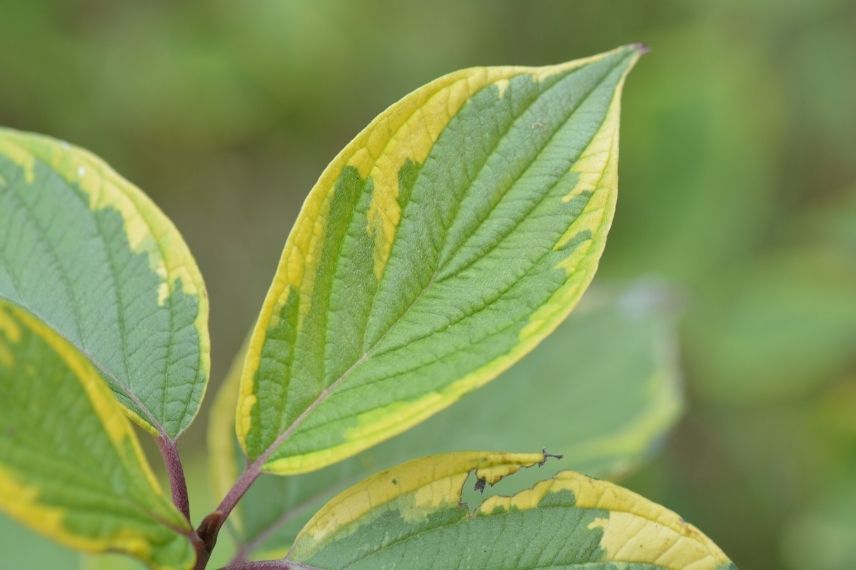
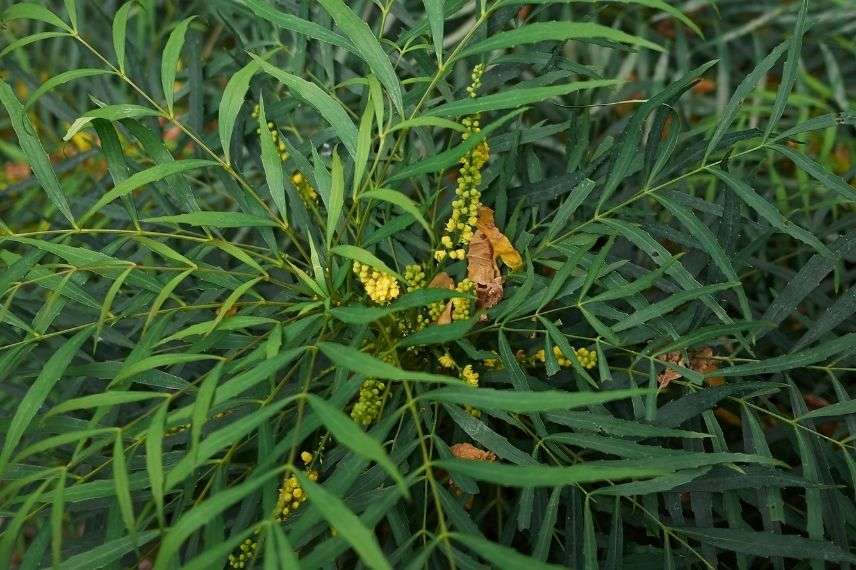
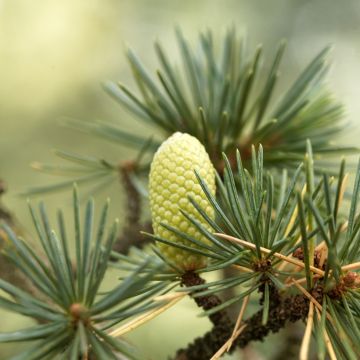
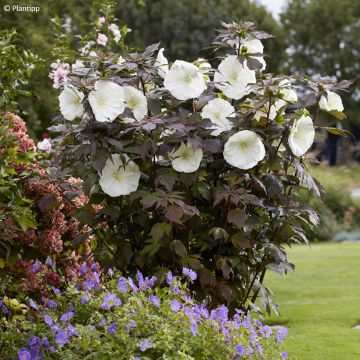
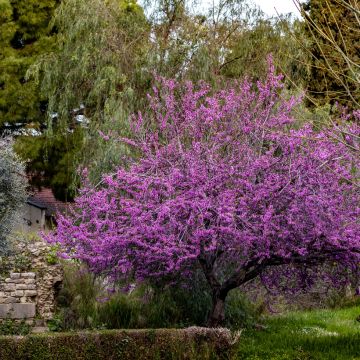
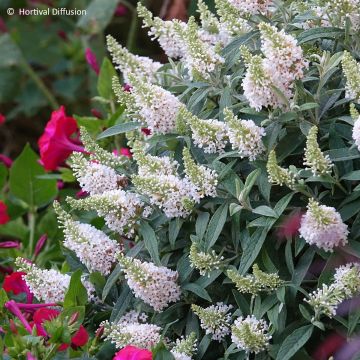
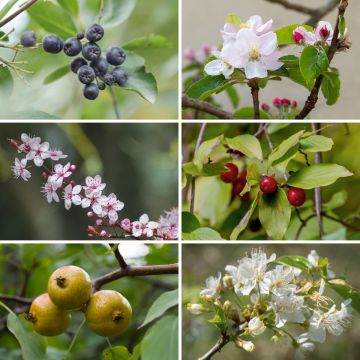
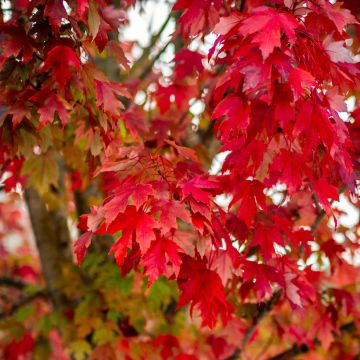
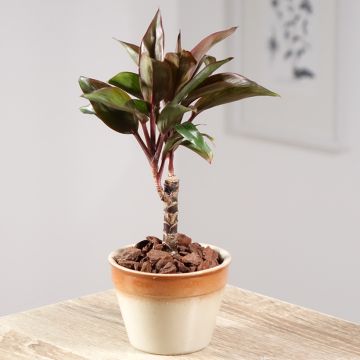
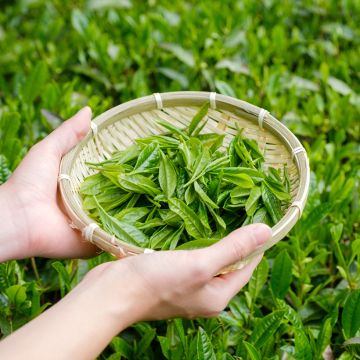
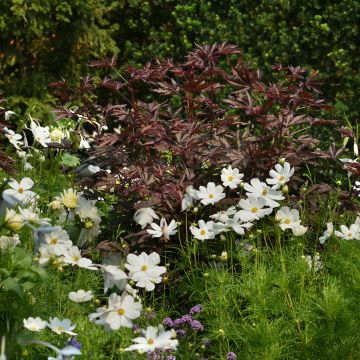
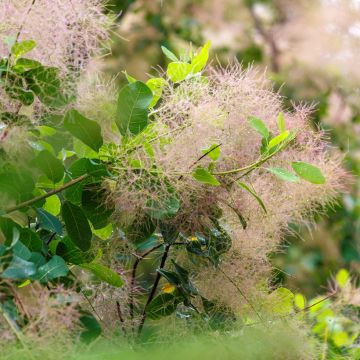
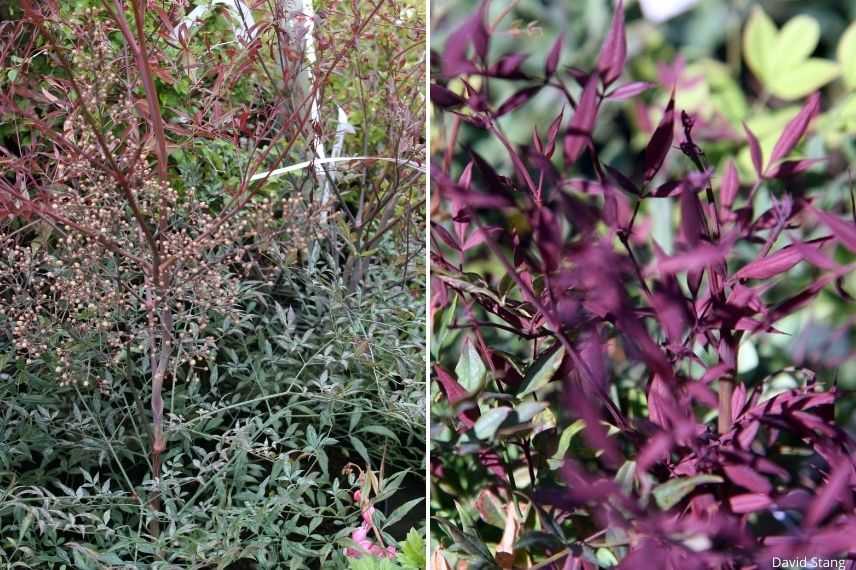
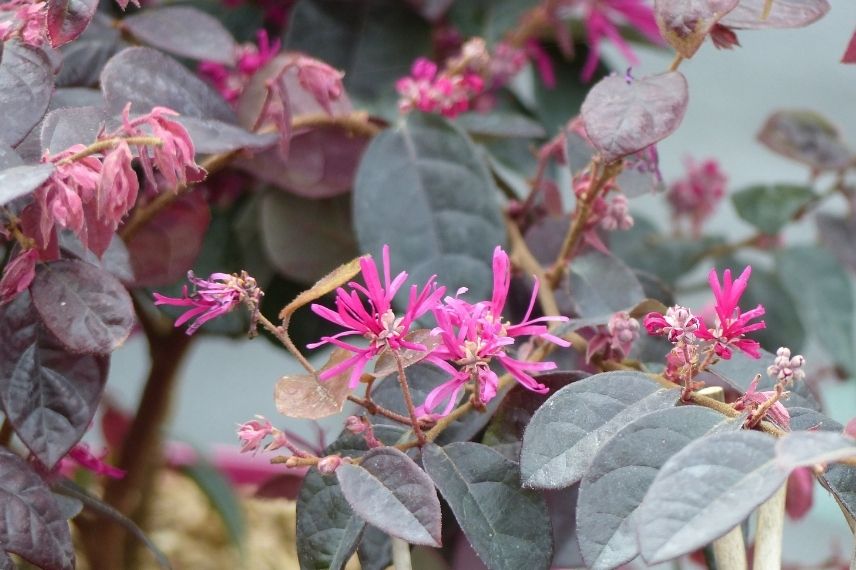
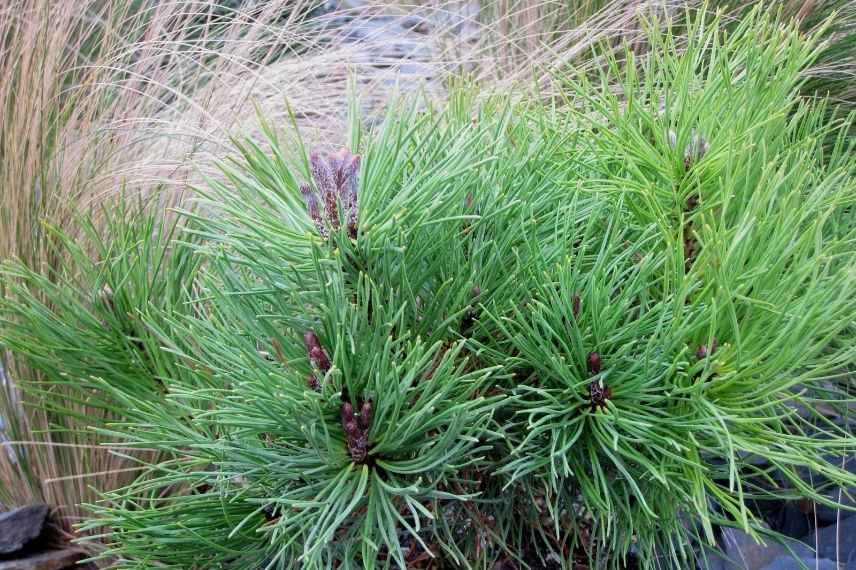
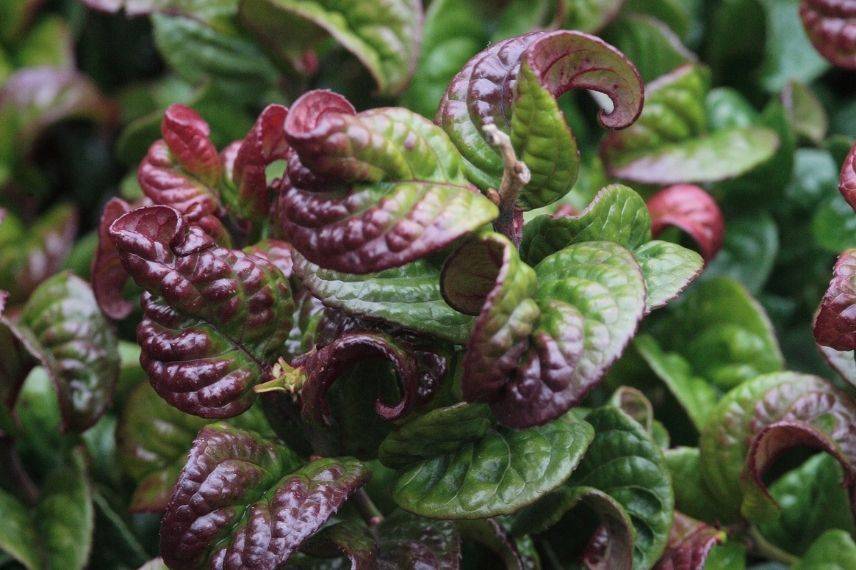
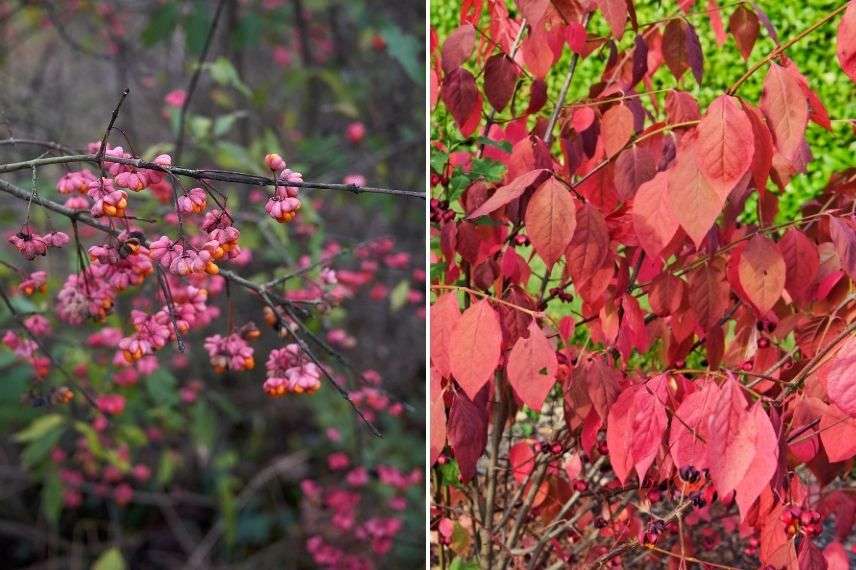
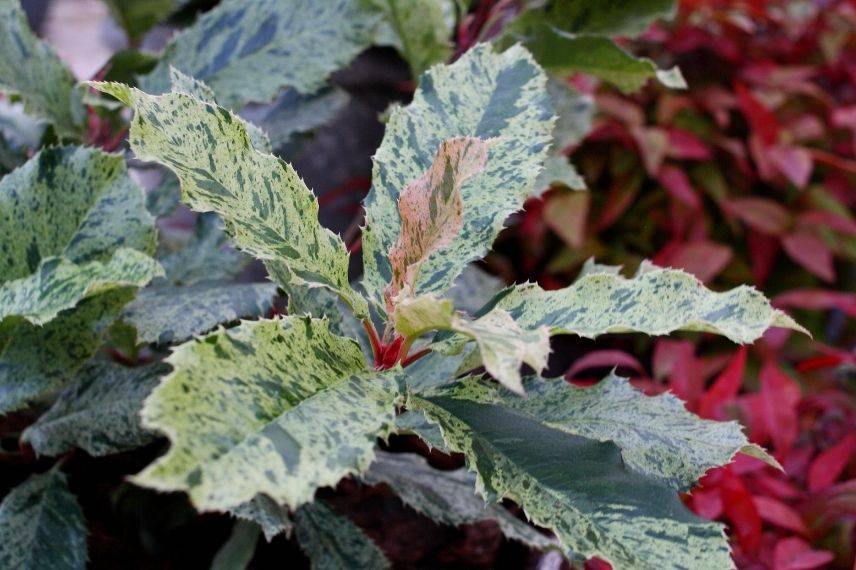
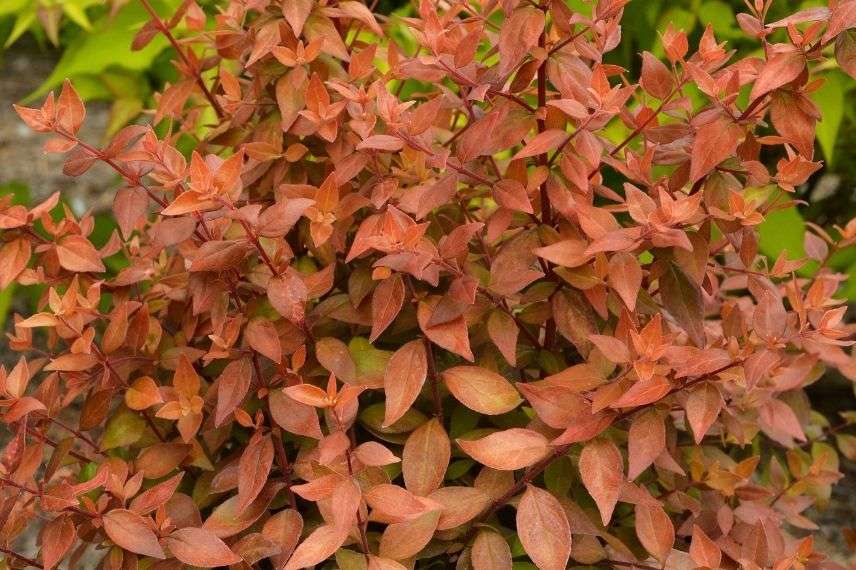
Comments